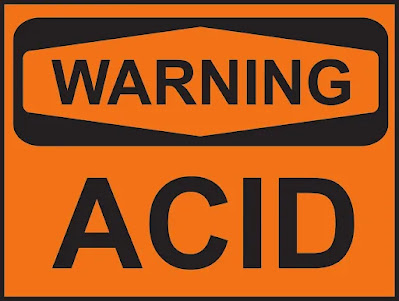“The Secret to Safe and Sustainable Chemical Handling in the Lab!”
As science educators, ensuring the safety of our students & staff while conducting experiments & demonstrations is of utmost importance. To ensure the safe storage, handling, use, and disposal of chemicals in the laboratory.
The Responsible Management of Laboratory Chemicals
Below are some points that should be considered as the responsible management of chemicals in the laboratory!
- Knowledge is key – Before using any chemical, read the label and MSDS carefully to understand the hazards, safety precautions, and personal protective equipment required. Never work with a chemical unless you understand its hazards.
- Safety gear is a must – Always remember to wear chemical-resistant goggles & an apron when handling chemicals, heat, or glassware.
- Preparation is crucial – Ensure that an approved eyewash station, fire blanket, and fire extinguisher are available in the laboratory or storage room where chemicals are used & stored. Inspect these safety devices regularly and keep a record of each inspection.
- Keep track of your chemicals – Keep an inventory of all chemicals in your lab, including the quantity and location of each chemical.
- Proper storage – Store all chemicals in a locked storage area designated for chemical storage away from the science classroom or laboratory.
- Organize for safety – Store laboratory chemicals by compatible families with the Formulated Chemical Storage System, not alphabetically.
- Keep flammables away from the ignition – Securely cap flammable liquids and combustible materials and keep them away from sources of ignition or open flames. Good ventilation is also necessary.
- Use approved storage cabinets – Store flammable liquids in an approved flammables storage cabinet, concentrated acids in an all-wood acid storage cabinet, and severe poisons in a locked poison cabinet.
- Be prepared for spills – Keep spill kits with dry sand, absorbent material, and neutralizer handy in all lab & chemical storage units.
- Consider the consequences – Evaluate the educational value of each lab activity or teacher demonstration in terms of the hazardousness and disposal of the chemicals used.
- Plan ahead for disposal – Before beginning any laboratory activity, read the disposal recommendations for any chemical or biological material and prepare any necessary materials for the neutralization, sterilization, etc., of reaction byproducts or biological waste.
- Choose reliable chemicals – For chemicals with secure packaging and clear labels, always order your chemicals and lab kits from a reliable company. These chemicals also come with a date label so you always know their age.

Safe Handling of Acids and Bases
Acids and bases are common components of many laboratory experiments & must be handled with care. Lab technicians suggest the following safety practices:
- Add acid to water – Acid should always be added to water when diluting or mixing concentrated acids.
- Use heat-resistant glassware – For the exothermic reaction that occurs when acid is added to water, use heat-resistant borosilicate glass (such as Pyrex) and place the beaker or flask in an ice bath to avoid overheating.
- Handle bases with caution – Mixing solid sodium hydroxide or potassium hydroxide with water generates a significant amount of heat. Use borosilicate glass and place the beaker or flask in an ice bath to avoid overheating.
- Clean thoroughly – Clean countertops thoroughly after using acids or bases to avoid accidental exposure and chemical burns.
- Dispense in a fume hood – Concentrated acids should be used under a fume hood, and any spills should be contained using a spill tray or mat. Use tiny reagent bottles to decrease the probability of significant spillage.
Transport Safely Acids and Bases
Acids and bases must be transported with care to avoid accidents and spills. Here are some tips for safe transport:
- Label containers clearly – Clearly label all containers containing acids or bases, including the name and concentration of the chemical.
- Use proper containers – Use leak-proof containers specifically designed to transport caustic liquids. Glass containers should be avoided as they are easily broken.
- Secure containers – Make sure containers are securely closed to prevent leakage during transport.
- Store containers upright – Store containers in an upright position to prevent leaks & spills.
- Transport in a well-ventilated area – Transport containers in an area with good ventilation to minimize the possibility of breathing in toxic fumes.
- Wear appropriate personal protective equipment – Wear gloves, goggles, and other suitable personal protection equipment when handling & transporting acids and bases to avoid skin contact & spills.
- Avoid mixing chemicals – Avoid mixing different acids or bases as this can cause a chemical reaction and release toxic fumes.
- Store in a cool, dry place – Containers should be kept in a cool, dry location away from heat sources & combustible materials.
In conclusion:
- By following these safety practices, you can help ensure the safe handling and transportation of acids and bases in a laboratory or other environment.




1 thought on “The Secret to Safe and Sustainable Chemical Handling in the Lab!”